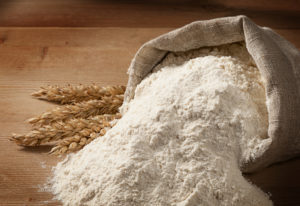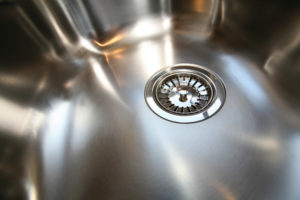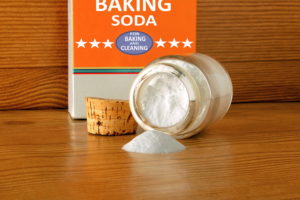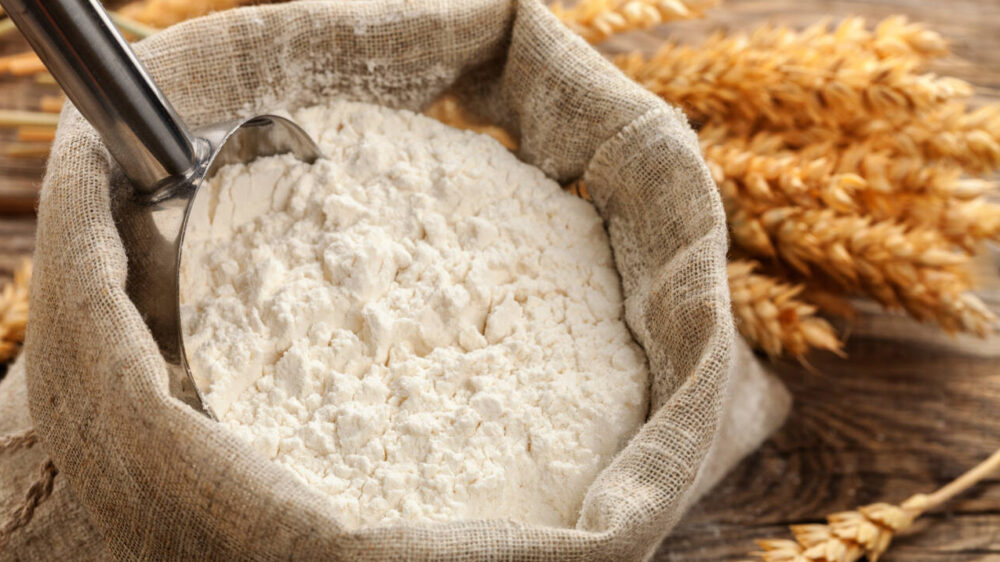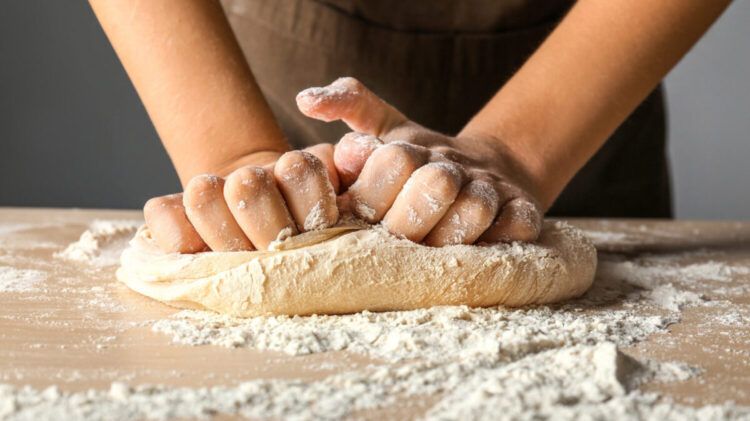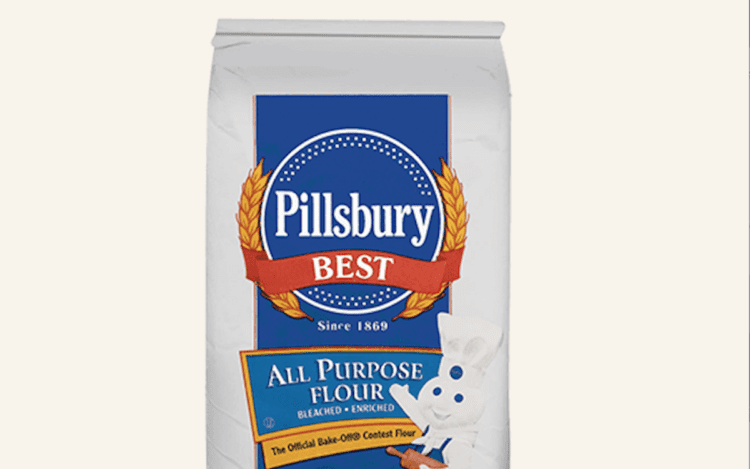How to polish your stainless steel sink with flour
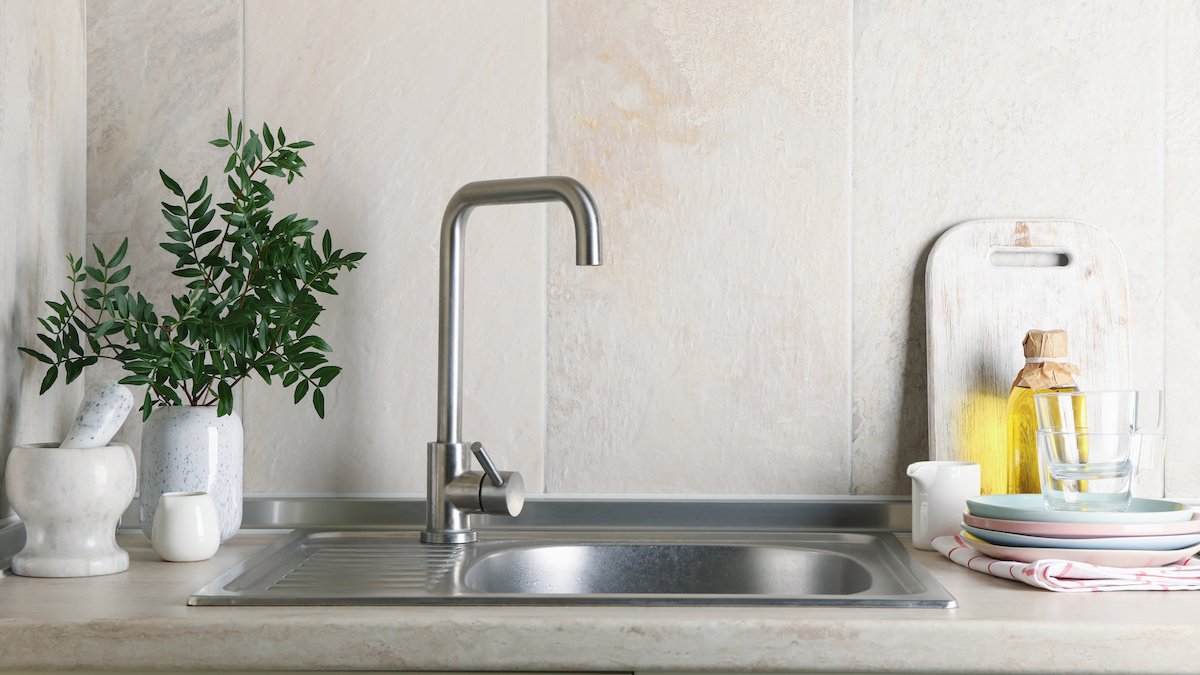
Stainless steel is a popular choice when it comes to kitchen sinks and appliances because it’s durable, affordable and low-maintenance — but it has its drawbacks. The reality is that stainless steel sinks are prone to dulling and damage from water spots and soap scum. They are also easily scratched. Additionally, this can be a tricky surface to clean because ordinary multipurpose cleaners may leave a streaky residue behind. So how can you polish stainless steel sinks to keep them sparkling?
MORE: The Best Single-Lever Faucets
One remarkable stainless steel cleaner that costs pennies per clean is probably already in your cupboard: flour. Not only does flour work to make your sink spotless, but it’s also a green product that’s totally safe for your family and the environment. It doesn’t include a lot of unpronounceable ingredients, either.
Yes, we know. Flour isn’t something you’d normally associate with cleaning. But hear us out. This little bag is about to be your favorite new grime-fighting partner. This versatile powder acts as a mild abrasive that will scrub away surface dirt in all the tiny crevices of your sink. We will walk you through how to polish stainless steel with flour.
What You Need
- Flour — white or wheat, dealer’s choice
- Two soft rags or paper towels
- Kitchen spray cleaner or hot soapy water
How To Polish Stainless Steel With Flour
First, clean your kitchen sink with hot soapy water or your usual kitchen spray cleaner. You can also use vinegar. Then buff the entire sink dry with a clean rag. Don’t skip this important step! The key to a good shine is for every drop of liquid to be whisked away with rag No. 1. Otherwise, you’ll end up with a sink full of a goopy dough-like mess. Then sprinkle it with a light dusting of flour. The actual amount doesn’t matter, just start small and increase as needed.
We aren’t going to lie. The first time you do this it will feel weird, even downright wrong, but trust us. You’re about to be amazed.
Next, use dry rag number two to buff the flour into the sink as if you were waxing a car. Just rub lots of tiny little circles all over the sink base, sides and drain. Really get into those little grooves where gunk likes to fester. Thanks to the combo of flour and elbow grease, you’ll see the shine start to reveal itself as you go.
Now, you have two choices: you can wipe up any excess flour with your rag or you can vacuum it up. The hose attachment will suck it right up. Or you could even use a rubber scraper to help pull it up from the bottom of your sink. Just remember that too much flour and water can cause a clogged mess in your drain, so make sure every bit is gone.
How Often Should You Use This Trick?
Once you experience this level of shine, you might reach for other stainless steel areas that could use a good buff like your dishwasher surface or refrigerator. Then plan on ordering out, because who wants to dirty up a perfectly clean kitchen?
While this type of polishing might not be practical — or necessary — for everyday cleaning, it’s a great once-a-month task. That’s because it buffs the micro-grooves in the sink’s surface and reaches things your standard sponge and soap can’t.
However, if you’re one of those people who can’t go to bed without having the kitchen look spotless, we get it. There’s nothing quite like ending your day with a win and a shiny sink can provide a big sense of accomplishment. Doing it daily is A-OK.
How To Polish Stainless Steel With Baking Soda
If using flour makes you feel iffy because of your pipes, you could opt for baking soda instead. It dissolves in water and won’t cause you any drainage trouble. Just like flour, it won’t leave behind any toxic substances either. Baking soda is nice because it’s tough yet gentle: it can handle light hard water deposits and grease but will also deodorize your sink and drain.
First, clean your sink as you normally would with hot soapy water or a multi-purpose spray. No need to dry. Simply sprinkle baking soda and gently scrub in the direction of the steel grain. Then spray with undiluted vinegar. You’ll watch it fizzle for several seconds. Once that stops, rinse it down the drain with water. You can finish it by buffing the sink with a few drops of olive oil. Just be sure not to overdo it. Using too much oil will make you need to start all over again!
Whether you’re using baking soda or flour, make the cleaning process even easier for yourself. Store some in a Parmesan cheese dispenser for easy-breezy shaking.
Try this! You may love the results. Or do you have a different trick up your sleeve for how to polish stainless steel?


